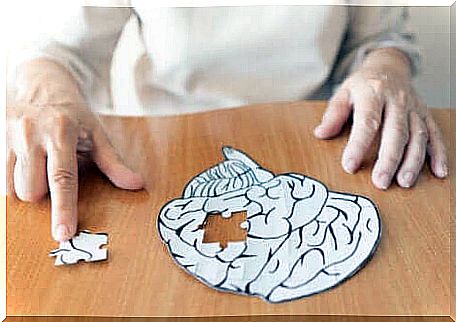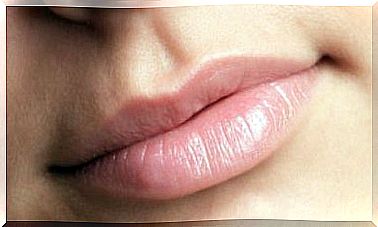How Does Psychoanalysis Work?
Psychoanalysis remains a theory which aims to resolve the unconscious aspects of the human mind. Is it a science? How does it work?

The main historical precedent of psychology is, without a doubt, psychoanalysis. In our daily life, it is common to hear psychoanalytic references.
Often, people naturally use terms such as unconscious, repression or revealing slip . All of these terms come from the psychoanalytic school.
In this article, we present to you the postulates proposed by psychoanalysts in order to be able to understand its functioning. It all starts with the ideas of Sigmund Freud.
What does psychoanalysis correspond to in the field of psychology?
Psychoanalytic theory holds that the behavior of human beings is the product of a series of psychological interactions that occur at different levels of consciousness: unconscious, preconscious and conscious. At his origins, Freud enjoyed enormous recognition for having created the theory of psychoanalysis.
Over time, psychoanalytic concepts began to be challenged more and more, with psychology taking a more scientific and less philosophical direction. Nowadays, psychoanalysis is defined as a theory which serves to understand the functioning of the human mind from an unconscious angle.
Although psychology as a science has managed to separate its paths from psychoanalytic theory, many concepts of psychoanalysis remain within psychological language to illustrate certain phenomena of human thought.
For modern psychology, psychoanalytic theory represents its origins, especially in the field of psychotherapies. Many psychologists have an attraction to psychoanalysis as therapy, and even train as psychoanalytic therapists in addition to their degree in psychology.

How does psychoanalysis work?
The main resource of psychoanalytic therapy is speech. Through continuous (weekly) sessions, psychoanalysts help their patients, through dialogue, by confronting them with situations from the past.
Childhood is one of the most accentuated stages during psychoanalysis sessions. The main idea in the functioning of these therapies is that the person is able to access certain information which is repressed in his unconscious. Thus, the patient can properly internalize his past experiences and experience better reactions in his present.
According to Freud, the psychic apparatus is made up of three instances: the ego, the ego and the superego. The ego represents the innate desires of the person, the superego is the product of the relationship of the individual with his surroundings and seeks a balance between desires and coexistence. While the ego is the unconscious instance.
Psychoanalysis is a long therapeutic process that can last for years. For some, however, the length is counterproductive. Critics of the theory argue that it makes no sense to keep a person in such a long process of retrospection.
Fundamental Principles of Psychoanalytic Theory
Each psychoanalyst must be able to treat his patient according to his needs. Therefore, the types of therapeutic approach will depend, to a large extent, on the professional.
There are, however, some basic principles that should not be overlooked. To better understand how psychoanalysis works, let’s see what its guidelines are:
- The root cause of today’s conflicts often lies in unresolved childhood issues.
- The patient’s psychological conflicts are the result of unconscious thought processes.
- The latent problems are at the origin of the symptomatology.
- The psychoanalytic process helps to make unconscious thoughts aware. It is at this moment that the subject can access the real solution of his conflict.
Within the framework of psychoanalytic theory, there are also the concepts of instinct and psychic dams which it is necessary to examine in depth. First of all, drives represent the intense and uncontrollable desires of individuals. These are the cravings that we can’t help but think about.
Moreover, the drives are visceral and need to be satisfied. On the other hand, we find the psychic dams. It is about all the social norms as well as the moral information that each subject possesses and interprets in a logical way. Dikes prevent people from satisfying their urges inappropriately.
What is the use of psychoanalysis?
The psychoanalytic process allows one to come to a comprehensive understanding of one’s own personality. Therefore, this type of therapy works quite well with people who experience recurring emotional distress. Psychoanalysis helps them find the exact causes of their troubles.
When the patient is able to find the source of their discomfort, they feel relief. The effect of dissipating uncertainty is lifesaving.
On the other hand, for people who are looking for a quick solution to a one-off conflict, psychoanalysis is not the most advisable.
As we have mentioned, the theory created by Sigmund Freud is based on the unconscious elements of the personality. These are not easily accessible in the medium and long term. One of the main hindrances to obtaining quick results are the famous defense mechanisms.
When a person begins to face certain uncomfortable realities, a series of psychological phenomena take place in their mind in order to protect them. But paradoxically, the defense mechanisms of the unconscious have a harmful effect since they prevent access to reality.

Criticisms of Psychoanalytic Theory
Throughout its history, psychoanalysis has been heavily criticized because the effectiveness of many of its postulates cannot be proven. In other words, in some cases it may be useful to go back to childhood to resolve a present conflict, but this is not always the case.
For this reason, psychoanalysis has come to be seen as a resource for anecdotal treatment. However, in global psychological jargon, the terms derived from this theory have remained symbolically valid.









